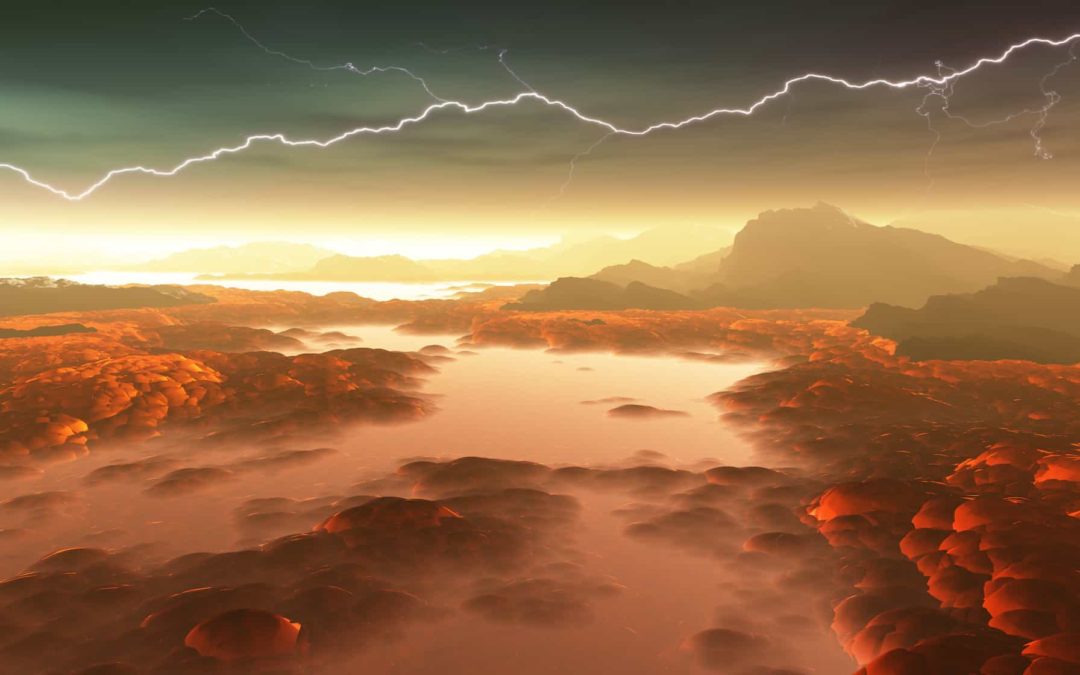
Three new missions to Venus were announsced in June: two by NASA in their Discovery Program and one by ESA in collaboration with NASA, as a part of their EnVision project. The missions will explore the early history of Venus and study how the planet turned into an inferno-like world despite similar traits with Earth. The two NASA-missions were picked out from their 2019 competition.
To get an insight into the missions and the mystery of Venus, we have spoken to Dr. Michael Way, scientist at The NASA Goddard Institute for Space Studies and guest professor at Uppsala university, who is an expert in the field. He and his team has shown with models that it is possible that Venus was habitable early on, and the new missions can show if they are right.
Why Venus?
There is a mission at Venus right now, a Japanese mission called Akatsuki, and the European Venus express mission, which was mostly upper atmosphere and a little bit of infrared imaging, finished about 7 years ago, Michael Way begins. It's not that we haven't visited Venus, rather that we haven't explored Venus even close to as far as we have studied Mars, he continues. Even considered Venus is closer to Earth than Mars.
"One of the reasons, I think, that Venus has had less attention than Mars is the fact that Mars is much easier to study. We can put rovers on the surface of Mars as the planet does not have this crushing hot atmosphere that Venus has," Way reasons.
Venus atmosphere makes everything much more complicated.
The soviets sent several probes to Venus in the 70s and 80s that were very successful, he continues. The American’s sent a very successful probe called Pioneer Venus which was an orbiter and in-situ probe, and they sent the Magellan mission, which made the first, and only, global radar map of the surface that we have, Way explains.
"We have to use radar as it is impossible to use imaging as we do with Mars, because we cannot see the surface," Way states.
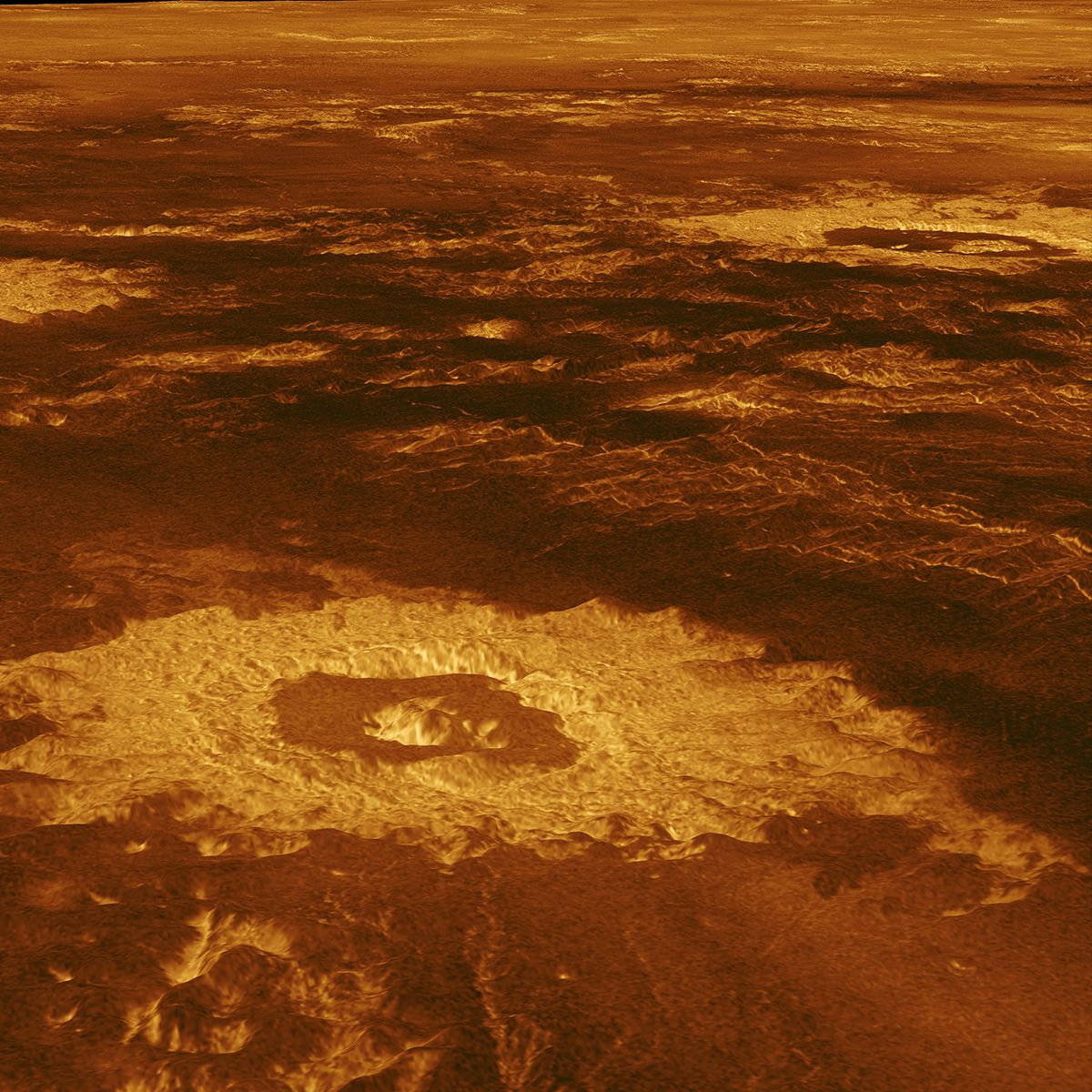
Study Venus as an exoplanet
I would say that there are a couple of things that have changed in the last 20 years, he continues. One of those things are of course the amazing diversity we see with exoplanet discoveries. There have been many arguments for looking at Venus as an exoplanet, in a sense, and understanding Venus, Earth and Mars as exoplanets. We have ideas about what the habitable zone is, but they have all been based on Earth. There is some evidence that early Mars could have been habitable, however, it is not known for how long.
For a long time, Venus has been viewed as a hostile world who has been hostile from day one. But by looking at exoplanets we have gained more knowledge about planetary evolution. Venus contradicts our intuition about planetary evolution, Way explains.
"How can we have a planet very similar to Earth in size, in density and chemical make-up, that yet has this thick atmosphere dominated by carbon dioxide but also three times as much nitrogen compared to Earth's," he asks.
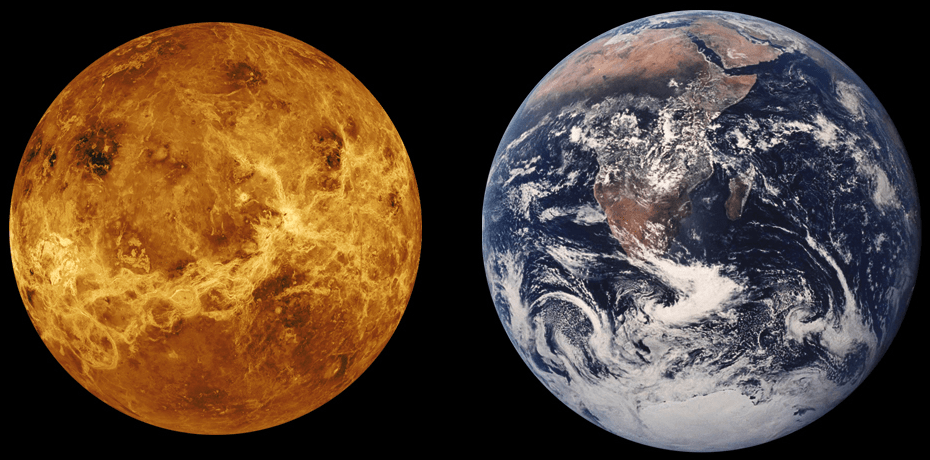
Another fact that confuses scientists is the fact that Venus does not have a magnetic field, which is unusual because without a magnetic field, a planet should not be able to hold on to a thick atmosphere. For instance, Mars has a weak magnetic field and a thin atmosphere.
"With our ideas of planetary evolution, it does not add up! I think, first of all, that this is showing us that while magnetic fields play some role in understanding the atmosphere dynamics, it is not the whole story," Way explains.
Another thing that I believe has changed, he continues, is that we have hypothesized for a long time that Venus has had this habitable phase early on with liquid water on the surface. However, there has been a few problems with this hypothesis. Firstly, it has been very difficult to understand how it could be possible with the models available. If we consider a simple one-dimensional model and take Earth today and move it to Venus's orbit and place it at four billion years ago when the Sun was 20% less luminous. That planet would be receiving 40% more incident radiation than Earth receives today, a fact making it uninhabitable.
Models can help us understand Venus
A paper from 1971 by James Pollack showed with simple 1D models that a planet like Earth with 50% cloud coverage (roughly what Earth had) was a “run-away greenhouse” − impossible to keep cool. But if he increased the cloud coverage to 100%, the surface temperature was about 300 K (roughly 27 degrees Celsius). Even considered he had no justifications for a 100% cloud cover, he pointed out something important about early habitability, Way highlights. Let's assume we have a planet with similar traits to Earth in its early history, if it was cool enough in its early days it would have been cool enough to have water condensed on its surface as oceans, as Earth did, following similar evolutionary paths in this scenario.
"In these early hypotheses, the idea was that you had these surface-liquid-oceans and as the Sun brightens through time, the planet heats up and turns into a “run-away greenhouse” with the water finally ending up in the atmosphere. You basically boil of the oceans," Way explains.
Therefore, a planet following such evolutionary path should end up with an atmosphere loaded with oxygen from the water molecules, and Venus does not! Pointing out an important problem with the early-ocean hypothesis. The two big problems with understanding an early habitable Venus were that we did not understand how to make Venus habitable early on and we did not see any oxygen in the atmosphere, he summarizes.
But could it still have been habitable? A paper from 2013 discusses different evolutionary paths for planets and showed that Venus sits at the margin where the post-accretion magma oceans could be around for over a hundred million years. This could solve the problem with the lack of oxygen in the atmosphere as an active magma ocean would absorb all of it! The other scenario would create a short magma-ocean period just like Earth. It is far from a perfect model, Way explains, but it is an important start.
Was Venus habitable early on?
Around 2014 my group was doing exoplanet modelling, Way continues. At the same time a graduate student at the University of Chicago was looking at a large parameter study of exoplanets and realized that if a planets rotation is slowed down a lot, the atmospheric dynamics is changed for a world like Earth, creating a shield against the radiation from the star. He had two sentences discussing the possibility that if Venus has been slowly rotating for a long time and considering the increased isolation compared to Earth, it could have liquid water on its surface even today! Which of course was incredibly interesting, and my group had to continue the investigation, Way says.
"My group did a study focusing on Venus from a planetary perspective, and we found the same thing," Way happily explains.

Now we had a way to justify a 100% cloud coverage and still make the planet habitable, a fact that we discuss in in our paper from 2016, Was Venus the first habitable world of our solar system?, he continues. We could now ask, was Venus the first habitable planet in the solar system? In theory it could have had liquid oceans earlier than Earth, making it possible for life to begin, he explains.
If Venus was slowly rotating, which it is today, it may have been 4 billion years ago and in our paper we did arguments for why and how this could be, he continues. I think that this helped these mission concepts in a way, because now they had arguments for “yes Venus could have been habitable early on” and this needs to be investigated further.
Still mysteries to be solved
However, we still need to solve the mystery with the oxygen and understand why the planet eventually goes “run-away greenhouse”. Our models show that the shield from the cloud cover would be very effective, even today, preventing the planet from going into a “run-away greenhouse”- scenario. And this is of course a problem that needs to be solved, Way concludes.
In our paper from 2020, we continued to discuss these issues, but ended up with the understanding that it is very hard to drive the planet into a “run-away greenhouse”- state if it was habitable early on because of the slowly rotating dynamic, he explains. The other thing that we hypothesized was that, today we see that 80% of the surface of Venus is relatively new, geologically. Which is a consequence from volcanic outgassing over the years, Way explains. Venus interior works differently compared to Earth. It does not have plate tectonics (tesserae), as we know it on Earth. In the paper, we came up with two hypotheses (using Earth as our starting point) to answer the questions:
How did Venus get into a run-away state?
In Earth's history, most frequent mass extinction events are not caused by impactors (asteroids), they are caused by volcanos! Contradicting what the public thinks, the biggest mass extinction event was a volcanic event, he explains. If we load the Earth with too much carbon dioxide from these volcanic events, the planet will not have time to recover. So our hypothesis is that Venus could have had a habitable period, we do not know if it did, and these kind of volcanic events could have driven the planet into a “run-away greenhouse”- state, Way establishes.
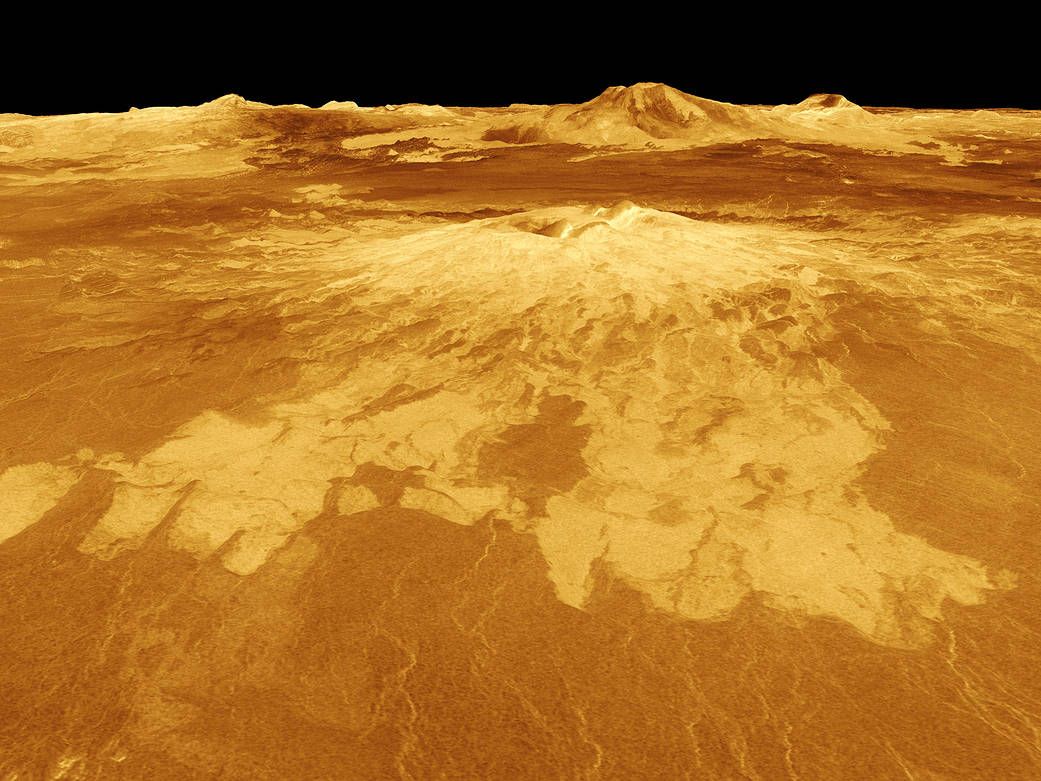
Where is the oxygen?
“What do we see at the surface of Venus?”, he asks, “we see that 80% of Venus is new in geologic terms”. Hence, our hypothesis is that after the end of these active volcanic, periods, the planet goes through a resurfacing, and it's the resurfacing that takes the oxygen out of the atmosphere in the same way the magma ocean would in the early scenario, he explains.
"I think that our paper from 2020 helped people think that this whole hypothesis was viable, however, whether that was directly influencing the selection of these missions I cannot say, but I don't think it could have hurt," Way discusses.
It is important to remember that these are just models, and could be completely wrong, but there are ways to constrain the models, Way continues, and one way is using for instance the DAVINCI+ probe. The probe will be dropped into the atmosphere with a very high-resolution mass spectrometer and measure the noble gases present in the atmosphere. Hopefully, it will be able to put constraints on how much water Venus had originally, when it lost its water, and what the time scale on that loss was. And assuming the probe will be able to do this, it will tell us if our models are rubbish, or if we need to adjust them, he states.
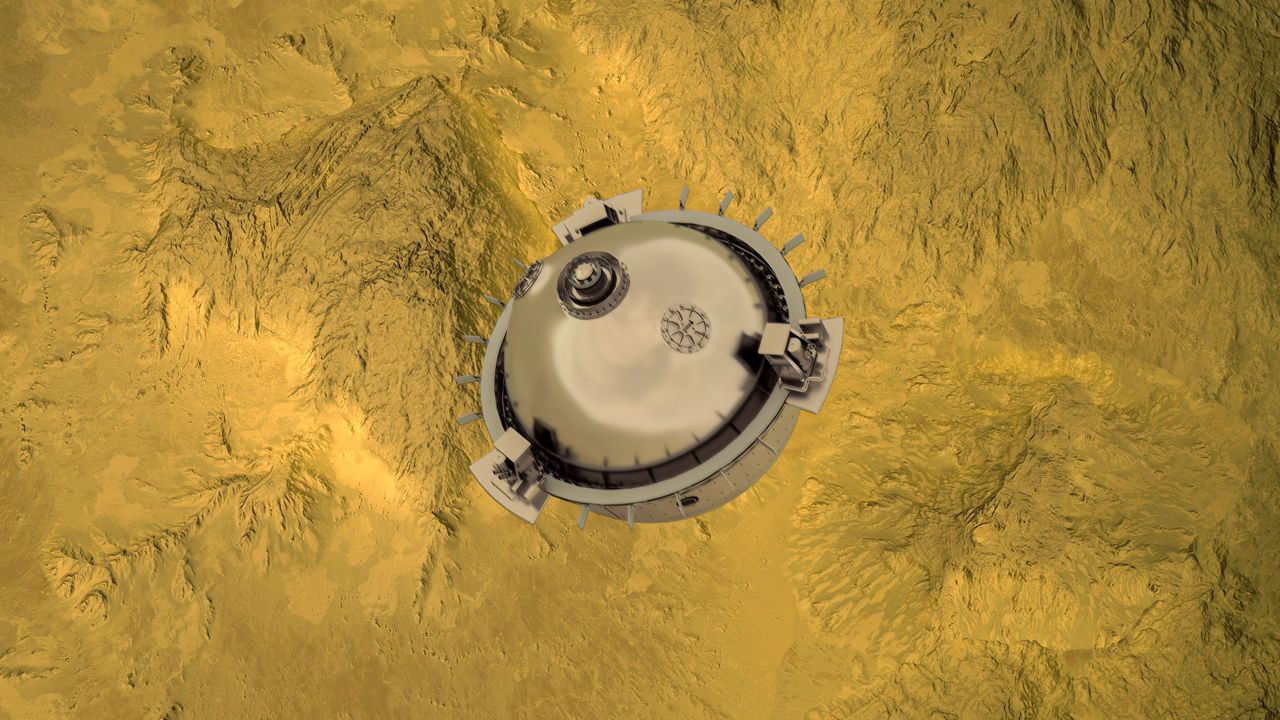
Further, we need to understand Venus to be able to understand Venus-like exoplanets because if we assume all planets in the Venus-zone to be dead like Venus and it turns out that they are not, it is a huge missed opportunity if we are looking for Earth-like worlds, Way reasons.
"We need to go back and really understand this world," Way concludes.
Summary of the missions
DAVINCI+
DAVINCI+ (Deep Atmosphere Venus Investigation of Noble gases, Chemistry, and Imaging) will study the atmosphere of Venus with the aim to understand how it has formed, as well as studying the possibility of water ever existing on the surface. To accomplish this, a durable sphere will be released towards the surface, doing measurements on its way down. DAVINCI+ will take the most high-resolution images ever taken of Venus geological features, focusing on the “tesserae” (comparable with Earth's continents).
VERITAS
VERITAS (Venus Emissivity, Radio Science, InSAR, Topography, and Spectroscopy) wants to determine the planets geological history and will do so by mapping the surface. The mission wants to explore possible reasons for the similarity between Venus and Earth. In orbit, VERITAS will create a 3D map of the topography and validate whether plate tectonics and volcanism still are active. Furthermore, the project aims to explore the rock type of the surface by studying the infrared emissions from the surface. Thomas Zurbuchen, NASA:s associate administrator for science told that:
"We're revving up our planetary science program with intense exploration of a world that NASA hasn’t visited in over 30 years."
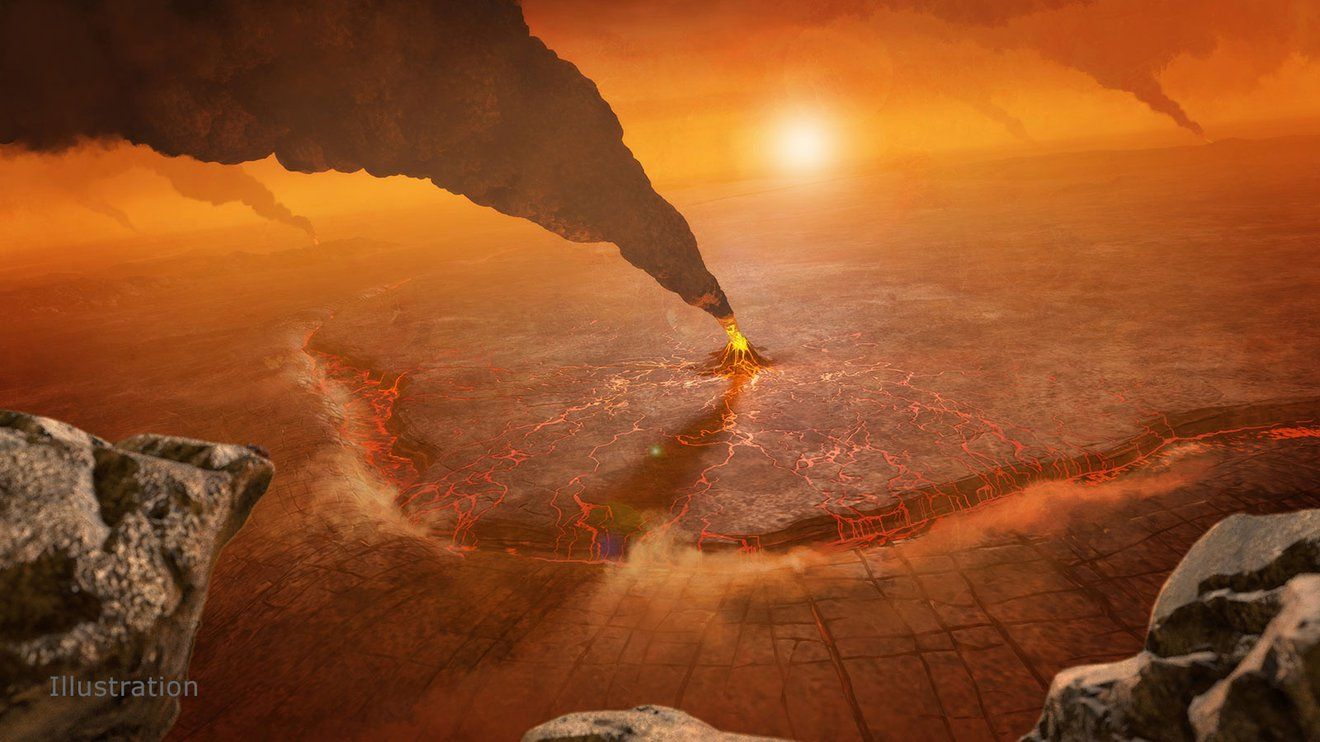
Further, Tom Wagner, scientist at NASA:s Discovery Program, said that “It is astounding how little we know about Venus, but the combined results of these missions will tell us about the planet from the clouds in its sky through the volcanoes on its surface all the way down to its very core”. “It will be as if we have rediscovered the planet.”, he states.
EnVision
EnVision will do detailed observations of Venus with the aim to understand the planets history and the relationship between geological processes and the atmosphere. NASA will be providing the Synthetic Aperture Radar, VenSAR, which will perform high resolution measurements of the surface.
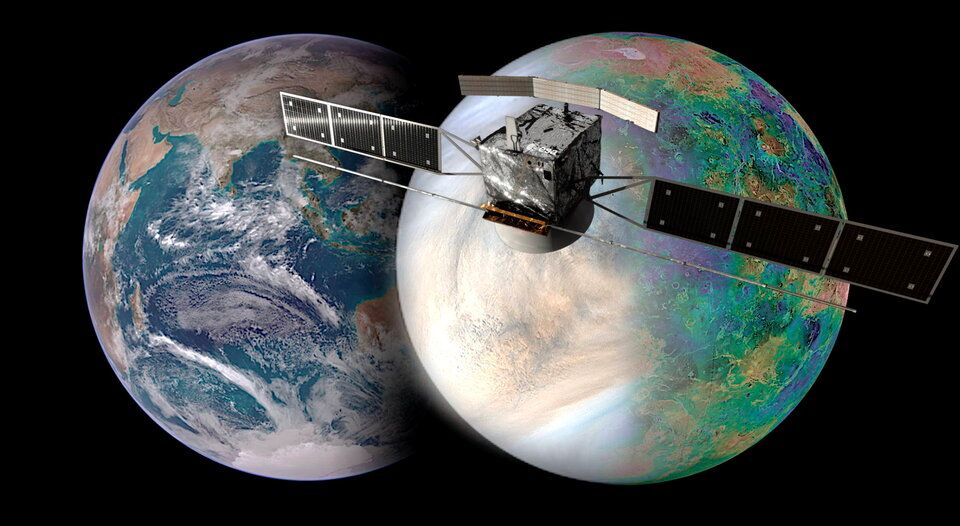
With these three missions it will be possible to know if the models by dr. Michael Way and his team are correct, or need adjustments, and it will hopefully be possible to say if Venus was habitable in its early history. The missions will also help us in the search for life outside the solar system, as the more we understand possible lifeforms on challanging worlds such as Venus, the more we understand about life in space.
Cover photo: An artist's illustration of Venus surface.

